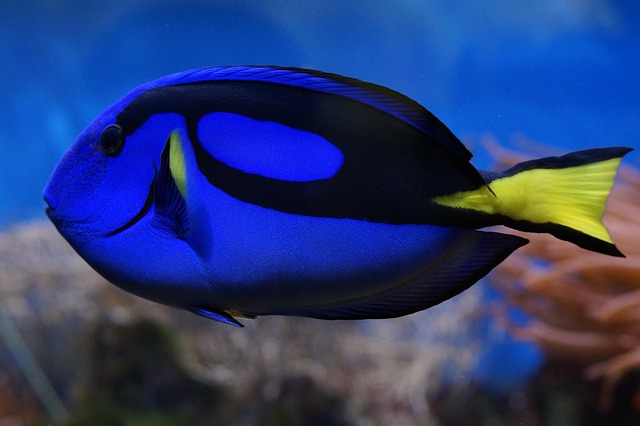Themed aquariums revolutionize education by immersing students in dynamic marine life displays, fostering curiosity and understanding of underwater ecosystems. These interactive exhibits, tailored for diverse learning styles, spark interest in ocean conservation and careers in marine biology or environmental science. Collaboration between educators, designers, and biologists ensures engaging, educational experiences that deepen appreciation for aquatic environments.
“Transform education with interactive and engaging aquarium exhibits for schools and museums. This article explores the powerful role of aquatic environments as educational tools, offering unique learning opportunities through themed aquariums. Discover how these innovative displays captivate students, foster curiosity, and enhance understanding of marine ecosystems. From designing immersive experiences to best practices for integration, we delve into strategies to leverage the educational potential of themed aquariums.”
Engaging Students Through Interactive Aquariums
Interactive aquariums offer a unique and captivating way to engage students in learning about marine life and conservation efforts. By incorporating themed aquariums into schools and museums, educators can create dynamic environments that spark curiosity and foster a deeper understanding of underwater ecosystems. These interactive exhibits go beyond traditional displays by allowing visitors to explore and interact with various sea creatures, providing an immersive experience that promotes active participation.
Themed aquariums provide an opportunity for students to connect with marine environments on a personal level. Through hands-on activities, such as feeding fish or observing touch pools, learners develop a sense of stewardship for ocean health. Additionally, interactive elements can be tailored to different age groups and learning styles, ensuring that each student is captivated and inspired by the wonders beneath the waves.
The Benefits of Themed Aquarium Education
Themed aquarium education offers a unique and engaging way to teach students about marine life and ecosystems. Unlike traditional classroom settings, these interactive exhibits allow learners to immerse themselves in diverse aquatic environments, fostering a deeper understanding and appreciation for the ocean’s wonders. By creating themed aquariums, educators can tailor lessons to specific age groups and interests, making complex ecological concepts more accessible and memorable.
The benefits extend beyond academic gains. Themed aquariums encourage curiosity and exploration, encouraging students to ask questions and think critically about conservation efforts and the impact of human activities on marine ecosystems. This hands-on approach to learning promotes active participation and can even spark future careers in marine biology or environmental science, especially among students captivated by the beauty and complexity of themed aquarium exhibits.
Designing Immersive Learning Environments
Designing immersive learning environments for schools and museums through themed aquariums offers a unique and captivating approach to education. These interactive spaces go beyond traditional teaching methods by immersing students in a world where they can observe and interact with marine life, fostering curiosity and engagement. Themed aquariums allow educators to create vivid, hands-on experiences that cater to diverse learning styles, making complex ecological concepts more accessible and memorable.
By incorporating creative design elements such as bioluminescent lighting, custom-built habitats, and interactive exhibits, themed aquariums transform the learning environment into a captivating narrative. This not only enhances student comprehension but also cultivates a deeper appreciation for marine ecosystems. The process involves collaboration between educators, aquarium designers, and marine biologists to ensure both educational accuracy and aesthetic allure, ultimately enriching the overall museum or school experience.
Best Practices for Museum Aquarium Integration
When integrating a museum aquarium, consider a seamless fusion with the existing exhibits and educational goals. Thematic aquariums offer an immersive experience by aligning with the museum’s focus, creating a cohesive narrative. This practice enhances visitor engagement and understanding of aquatic ecosystems.
Best practices include designing aquariums as microcosms of diverse marine environments, from coral reefs to deep-sea habitats. Interactive elements like touch pools and feeding demonstrations encourage hands-on learning. Ensuring proper maintenance and regular curatorial updates guarantee the health of exhibited organisms and keep content relevant. Collaborating with marine scientists can provide valuable insights for curriculum integration, making these aquariums powerful educational tools.
Interactive and educational aquariums, with their ability to engage students through themed exhibits, offer a dynamic learning experience for schools and museums. By designing immersive environments that bring aquatic ecosystems to life, these aquariums foster curiosity, promote environmental stewardship, and enhance overall education. Best practices emphasize collaboration between educators and aquarium designers, ensuring content aligns with curriculum goals. Themed aquariums, in particular, provide a unique platform to teach scientific concepts, spark imagination, and create lasting memories for visitors of all ages.
